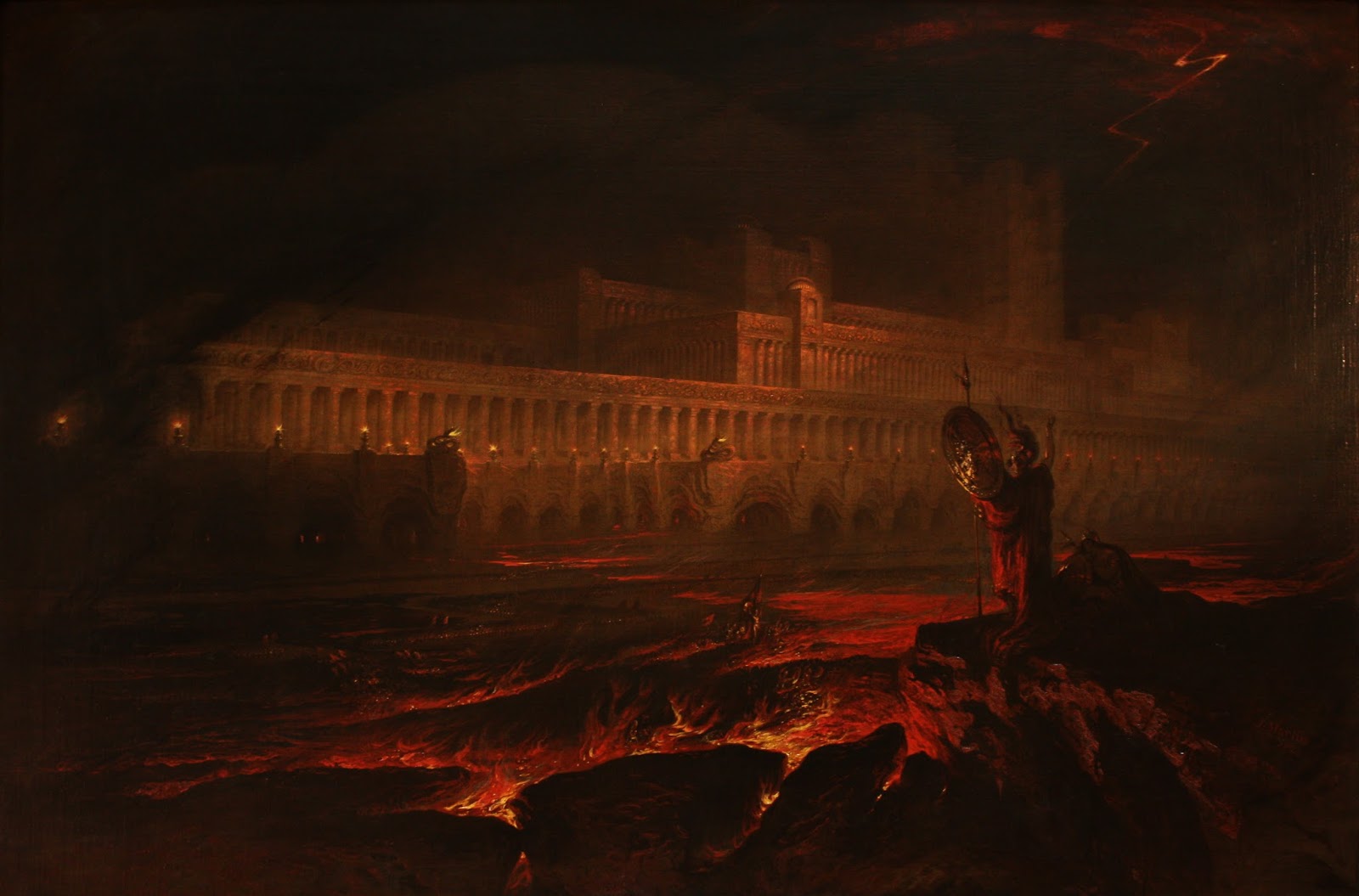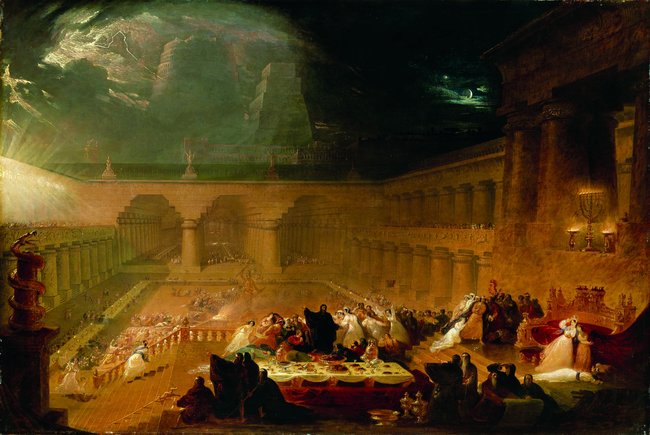 |
Pandemonium
1841
Louve, Paris |
Passion was the central theme of the Romantic Movement at the beginning of the 19th century. Following the cool, dispassionate Rationalism during the Age of Enlightenment, Romanticism embraced the senses and emotions of Man to better understand our nature. Beethoven explored Joy in his
Symphony No.9 (1824), Mary Shelly explored Fear in
Frankenstein (1818) and Hegel explored our Soul in
The Phenonomonology of Spirit (1809). Painting also followed this new theme with artists such as
Friedrich and
Delacroix depicting scenes of deep emotion.
One of the lesser known, but no less talented Romantic painters was
John Martin (1789-1854). His fantastical paintings streak across the canvas with the energy of wild fire and the ferocity of a raging storm exploring the emotion of Awe in the face of supernatural Power. Coming from humble beginnings Martin entered the Royal Academy during these early days of Romanticism creating compositions of great cinematic grandeur. Subjects of literally biblical proportions earned him popular success in his career influencing future generations of artists such as the Pre-Raphealites, HG Wells, and even George Lucas.
Although his popularity waned during the regime of Modernism, today his works have been restored to their proper place in art history, with a most recent retrospective at The Tate in 2011 and the acquisition of Pandemonium by the Louve in 2006.
 |
| Belshazzar’s Feast 1820 |





Truly stunning work. I cannot count how many times I've been shocked at the level of talent that had been so callously disregarded during much of the 20th Century. It's nice to see his work has endured and given it's proper due. Great post.
I absolutely agree
Magnificent stuff!
i saw the Pandemonium painting at the Musee du Louvre and it was truly spectacular. It really stand out from the rest and is one of my better memories of the museum.